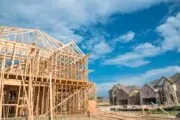
With vacancy on the decline and prices on the up, the Greater Toronto and Hamilton Area’s (GTHA) purpose-built rental apartment market experienced “increasingly competitive,” conditions last quarter according to new insights from Zonda Urban.
By the end of Q4-2021, vacancy across the GTHA had fallen 2.5 per cent from the previous quarter to an average of 11.3 per cent. Compared to Q4-2020, rental vacancy dropped 1.7 per cent in Q4-2021. The lower quarterly vacancy, Zonda Urban reported, can be attributed to steady absorption of newer product in the market.
“The vacancy for all projects decreased when compared to the previous quarter while vacancy for stabilized projects increased slightly showing renters preference for newer supply during the fourth quarter, likely due to the number of newer projects that were launched in the 2021,” said the report.
“Overall vacancy rates are quite low, indicating the return of renters to the market after many had left the urban markets during 2020 and early 2021. The increase in demand has in turn put pressure on rental rates,” it added.
Of the 13 sub-markets Zonda Urban analysed, eight reported lower vacancy rates compared to the previous quarter. Toronto West/York, Oakville and North York experienced the largest declines in vacancy from Q3-2021 to Q4-2021, dropping 8.5 per cent, 7.3 per cent and 6.5 per cent, respectively.
In total, 13 rental projects launched in the region during 2021, bringing 3,458 new units to the market. Since Zonda Urban started monitoring the GTHA in 2019, purpose-built rental apartment projects have increased from 31 to 76 buildings, delivering 17,826 apartment units to the region.
Currently, the GTHA market has 18 active projects that are conducting their initial lease-up campaign, which accounts for 5,037 units. These buildings have an average vacancy of 44 percent. The remaining 58 buildings in the GTHA are fully leased with 12,789 units, but 231 rental projects are being contemplated, and if approved, could add 84,305 units to the GTHA market. Forty-six projects are under construction and anticipated to launch within the next two to three years.
Zonda Urban considers new projects with more than 95 per cent occupancy to be fully leased or stabilized, as this is typically when units begin to turn over for the first time.

Rental rates increased 0.7 per cent — about $0.02 a square foot — from Q3-2021 to Q4-2021, upping average rates from $3.46 to $3.48 per square foot. On a yearly basis, rents have grown five per cent, or $0.18 per square foot, up from $3.30 in Q4-2020. Tighter market conditions as a result of falling supply was the likely culprit behind the increase in rents last quarter, the report stated.
Rents in downtown Toronto are currently the most expensive at $3.82 per square foot, while Scarborough is the most affordable at only $1.89 per square foot. Eight of the 13 sub-markets in Toronto reported higher average net rents per square foot from Q3-2021 to Q4-2021. This includes North York and Mississauga, which recorded quarterly increases of 7.4 per cent and three per cent.
Of the 11 unit types that exist for turned over apartments, rents increased in six of those categories. Prices grew the most for studios (11 per cent), two-bed-two-bath townhomes (11 per cent) and three-bed-two-bath townhomes (six per cent).
Although the value of rental incentives at actively leasing and fully leased buildings has dropped, most projects continue to offer some sort of promotion. As of December, buildings were offering free rent on 12- to 18-month leases, cash move-in bonuses, free internet or parking, gift cards and even a filled wine fridge.
Zonda Urban stated that it expects rents to continue to increase above pre-pandemic levels by Q2-2022.






